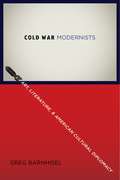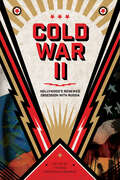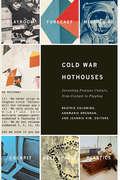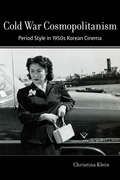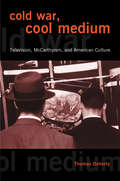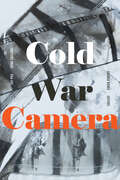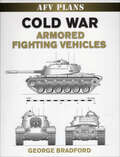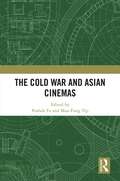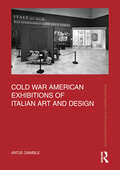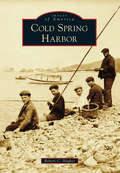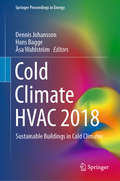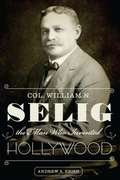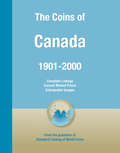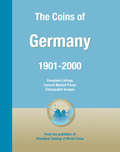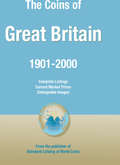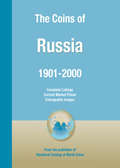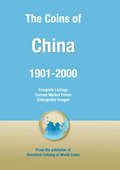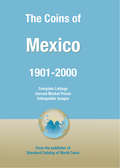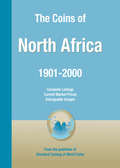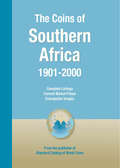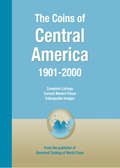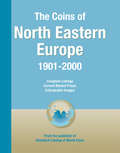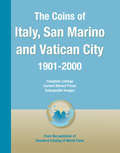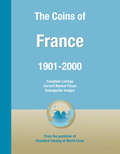- Table View
- List View
Cold War Modernists: Art, Literature, and American Cultural Diplomacy
by Greg BarnhiselEuropean intellectuals of the 1950s dismissed American culture as nothing more than cowboy movies and the A-bomb. In response, American cultural diplomats tried to show that the United States had something to offer beyond military might and commercial exploitation. Through literary magazines, traveling art exhibits, touring musical shows, radio programs, book translations, and conferences, they deployed the revolutionary aesthetics of modernism to prove—particularly to the leftists whose Cold War loyalties they hoped to secure—that American art and literature were aesthetically rich and culturally significant. Yet by repurposing modernism, American diplomats and cultural authorities turned the avant-garde into the establishment. They remade the once revolutionary movement into a content-free collection of artistic techniques and styles suitable for middlebrow consumption. Cold War Modernists documents how the CIA, the State Department, and private cultural diplomats transformed modernist art and literature into pro-Western propaganda during the first decade of the Cold War. Drawing on interviews, previously unknown archival materials, and the stories of such figures and institutions as William Faulkner, Stephen Spender, Irving Kristol, James Laughlin, and Voice of America, Barnhisel reveals how the U.S. government reconfigured modernism as a trans-Atlantic movement, a joint endeavor between American and European artists, with profound implications for the art that followed and for the character of American identity.
Cold War II: Hollywood's Renewed Obsession with Russia
by Tatiana Prorokova-KonradContributions by Thomas J. Cobb, Donna A. Gessell, Helena Goscilo, Cyndy Hendershot, Christian Jimenez, David LaRocca, Lori Maguire, Tatiana Prorokova-Konrad, Ian Scott, Vesta Silva, Lucian Tion, Dan Ward, and Jon Wiebel In recent years, Hollywood cinema has forwarded a growing number of images of the Cold War and entertained a return to memories of conflicts between the USSR and the US, Russians and Americans, and communism and capitalism. Cold War II: Hollywood’s Renewed Obsession with Russia explores the reasons for this sudden reestablished interest in the Cold War. Essayists examine such films as Guy Ritchie’s The Man from U.N.C.L.E., Steven Spielberg’s Bridge of Spies, Ethan Coen and Joel Coen’s Hail, Caesar!, David Leitch’s Atomic Blonde, Guillermo del Toro’s The Shape of Water, Ryan Coogler’s Black Panther, and Francis Lawrence’s Red Sparrow, among others, as well as such television shows as Comrade Detective and The Americans. Contributors to this collection interrogate the revival of the Cold War movie genre from multiple angles and examine the issues of patriotism, national identity, otherness, gender, and corruption. They consider cinematic aesthetics and the ethics of these representations. They reveal how Cold War imagery shapes audiences’ understanding of the period in general and of the relationship between the US and Russia in particular. The authors complicate traditional definitions of the Cold War film and invite readers to discover a new phase in the Cold War movie genre: Cold War II.
Cold War Hothouses: Inventing Postwar Culture, from Cockpit to Playboy
by Beatriz Colomina Annemarie Brennan Jeannie KimThe technological innovation and unprecedented physical growth of the cold war era permeated American life in every aspect and at every scale. From the creation of the military-industrial complex and the beginnings of suburban sprawl to the production of the ballpoint pen and the TV dinner, the artifacts of the period are a numerous and diverse as they are familiar. Over the past half-century, our awe at the advances of postwar society has softened to nostalgia, and our affection for its material culture has clouded our memories of the enormous spatial reorganizations and infrastructural transformations that changed American life forever.
Cold War Cosmopolitanism: Period Style in 1950s Korean Cinema
by Christina KleinSouth Korea in the 1950s was home to a burgeoning film culture, one of the many "Golden Age cinemas" that flourished in Asia during the postwar years. Cold War Cosmopolitanism offers a transnational cultural history of South Korean film style in this period, focusing on the works of Han Hyung-mo, director of the era’s most glamorous and popular women’s pictures, including the blockbuster Madame Freedom (1956). Christina Klein provides a unique approach to the study of film style, illuminating how Han’s films took shape within a "free world" network of aesthetic and material ties created by the legacies of Japanese colonialism, the construction of US military bases, the waging of the cultural Cold War by the CIA, the forging of regional political alliances, and the import of popular cultures from around the world. Klein combines nuanced readings of Han’s sophisticated style with careful attention to key issues of modernity—such as feminism, cosmopolitanism, and consumerism—in the first monograph devoted to this major Korean director. A free open access ebook is available upon publication. Learn more at www.luminosoa.org.
Cold War, Cool Medium: Television, McCarthyism, and American Culture (Film And Culture Ser.)
by Thomas DohertyConventional wisdom holds that television was a co-conspirator in the repressions of Cold War America, that it was a facilitator to the blacklist and handmaiden to McCarthyism. But Thomas Doherty argues that, through the influence of television, America actually became a more open and tolerant place. Although many books have been written about this period, Cold War, Cool Medium is the only one to examine it through the lens of television programming. To the unjaded viewership of Cold War America, the television set was not a harbinger of intellectual degradation and moral decay, but a thrilling new household appliance capable of bringing the wonders of the world directly into the home. The "cool medium" permeated the lives of every American, quickly becoming one of the most powerful cultural forces of the twentieth century. While television has frequently been blamed for spurring the rise of Senator Joseph McCarthy, it was also the national stage upon which America witnessed—and ultimately welcomed—his downfall. In this provocative and nuanced cultural history, Doherty chronicles some of the most fascinating and ideologically charged episodes in television history: the warm-hearted Jewish sitcom The Goldbergs; the subversive threat from I Love Lucy; the sermons of Fulton J. Sheen on Life Is Worth Living; the anticommunist series I Led 3 Lives; the legendary jousts between Edward R. Murrow and Joseph McCarthy on See It Now; and the hypnotic, 188-hour political spectacle that was the Army-McCarthy hearings. By rerunning the programs, freezing the frames, and reading between the lines, Cold War, Cool Medium paints a picture of Cold War America that belies many black-and-white clichés. Doherty not only details how the blacklist operated within the television industry but also how the shows themselves struggled to defy it, arguing that television was preprogrammed to reinforce the very freedoms that McCarthyism attempted to curtail.
Cold War Camera
by Thy Phu, Andrea Noble and Erina DuganneCold War Camera explores the visual mediation of the Cold War and illuminates photography’s role in shaping the ways it was prosecuted and experienced. The contributors show how the camera stretched the parameters of the Cold War beyond dominant East-West and US-USSR binaries and highlight the significance of photography from across the global South. Among other topics, the contributors examine the production and circulation of the iconic figure of the “revolutionary Vietnamese woman” in the 1960s and 1970s; photographs connected with the coming of independence and decolonization in West Africa; family photograph archives in China and travel snapshots by Soviet citizens; photographs of apartheid in South Africa; and the circulation of photographs of Inuit Canadians who were relocated to the extreme Arctic in the 1950s. Highlighting the camera’s capacity to envision possible decolonialized futures, establish visual affinities and solidarities, and advance calls for justice to redress violent proxy conflicts, this volume demonstrates that photography was not only crucial to conducting the Cold War, it is central to understanding it.Contributors. Ariella Azoulay, Jennifer Bajorek, Erina Duganne, Evyn Lê Espiritu Gandhi, Eric Gottesman, Tong Lam, Karintha Lowe, Ángeles Donoso Macaya, Darren Newbury, Andrea Noble, Sarah Parsons, Gil Pasternak, Thy Phu, Oksana Sarkisova, Olga Shevchenko, Laura Wexler, Guigui Yao, Donya Ziaee, Marta Ziętkiewicz
Cold War Armored Fighting Vehicles (AFV Plans)
by George BradfordTechnical artist and military historian George Bradford covers the Cold War, from the end of World War II through 1990.
The Cold War and Asian Cinemas
by Poshek Fu Man-Fung YipThis book offers an interdisciplinary, historically grounded study of Asian cinemas’ complex responses to the Cold War conflict. It situates the global ideological rivalry within regional and local political, social, and cultural processes, while offering a transnational and cross-regional focus. This volume makes a major contribution to constructing a cultural and popular cinema history of the global Cold War. Its geographical focus is set on East Asia, Southeast Asia, and South Asia. In adopting such an inclusive approach, it draws attention to the different manifestations and meanings of the connections between the Cold War and cinema across Asian borders. Many essays in the volume have a transnational and cross-regional focus, one that sheds light on Cold War-influenced networks (such as the circulation of socialist films across communist countries) and on the efforts of American agencies (such as the United States Information Service and the Asia Foundation) to establish a transregional infrastructure of "free cinema" to contain the communist influences in Asia. With its interdisciplinary orientation and broad geographical focus, the book will appeal to scholars and students from a wide variety of fields, including film studies, history (especially the burgeoning field of cultural Cold War studies), Asian studies, and US-Asian cultural relations.
Cold War American Exhibitions of Italian Art and Design (Routledge Research in Art Museums and Exhibitions)
by Antje GambleEnriching the existing scholarship on this important exhibition, Italy at Work: Her Renaissance in Design Today (1950–53), this book shows the dynamic role art, specifically sculpture, played in constructing both Italian and American culture after World War II (WWII). Moving beyond previous studies, this book looks to the archival sources and beyond the history of design for a greater understanding of the stakes of the show. First, the book considers art’s role in this exhibition’s import—prominent mid-century sculptors like Giacomo Manzù, Fausto Melotti, and Lucio Fontana were included. Second, it foregrounds the particular role sculpture was able to play in transcending the boundaries of fine art and craft to showcase innovative formalist aesthetics of modernism without falling in the critiques of modernism playing out on the international stage in terms of state funding for art. Third, the book engages with the larger socio-political use of art as a cultural soft power both within the American and Italian contexts. Fourth, it highlights the important role race and culture of Italians and Italian-Americans played in the installation and success of this exhibition. Lastly, therefore, this study connects an investigation of modernist sculpture, modern design, post-war exhibitions, sociology, and transatlantic politics and economics to highlight the important role sculpture played in post-war Italian and American cultural production. The book will be of interest to scholars working in art history, design history, museum studies, Italian studies, and American studies.
Cold War American Exhibitions of Italian Art and Design (Routledge Research in Art Museums and Exhibitions)
by Antje GambleEnriching the existing scholarship on this important exhibition, Italy at Work: Her Renaissance in Design Today (1950–53), this book shows the dynamic role art, specifically sculpture, played in constructing both Italian and American culture after World War II (WWII).Moving beyond previous studies, this book looks to the archival sources and beyond the history of design for a greater understanding of the stakes of the show. First, the book considers art’s role in this exhibition’s import—prominent mid-century sculptors like Giacomo Manzù, Fausto Melotti, and Lucio Fontana were included. Second, it foregrounds the particular role sculpture was able to play in transcending the boundaries of fine art and craft to showcase innovative formalist aesthetics of modernism without falling in the critiques of modernism playing out on the international stage in terms of state funding for art. Third, the book engages with the larger socio-political use of art as a cultural soft power both within the American and Italian contexts. Fourth, it highlights the important role race and culture of Italians and Italian-Americans played in the installation and success of this exhibition. Lastly, therefore, this study connects an investigation of modernist sculpture, modern design, post-war exhibitions, sociology, and transatlantic politics and economics to highlight the important role sculpture played in post-war Italian and American cultural production.The book will be of interest to scholars working in art history, design history, museum studies, Italian studies, and American studies.
Cold Spring Harbor
by Robert C. HughesA bustling industrial community in the 19th century, Cold Spring Harbor was once described as "a sweet bay of beauty." The area briefly served as a whaling port and was a center for shipbuilding, milling, and farming. Located just 35 miles from midtown Manhattan, Cold Spring Harbor was a fashionable summer resort for New York City residents who came to the area during the Gilded Age to enjoy the cool breezes off the shores of the harbor. Today, Cold Spring Harbor is a residential community with excellent schools, active organizations, museums, and the world-renowned Cold Spring Harbor Laboratories. Cold Spring Harbor traces the development of the area from its days as a bustling whaling port to a 20th-century suburbanized community.
Cold Climate HVAC 2018: Sustainable Buildings in Cold Climates (Springer Proceedings in Energy)
by Dennis Johansson Hans Bagge Åsa WahlströmThis volume presents the proceedings of the 9th Cold Climate HVAC conference, which was held in Kiruna, Sweden in 2018. The conference highlighted key technologies and processes that allow scientists, designers, engineers, manufacturers and other decision makers in cold climate regions to achieve good indoor environmental quality (IEQ) with a minimum use of energy and other resources. The conference addressed various technical, economic and social aspects of buildings and HVAC systems in new and renovated buildings. This proceedings volume gathers peer-reviewed papers by a diverse and international range of authors and showcases perspectives and practices in cold climate building design from around the globe. The following major aspects, which include both fundamental and theoretical research as well as applications and case studies, are covered: (1) Energy and power efficiency and low-energy buildings; (2) Renovating buildings; (3) Efficient HVAC components; (4) Heat pumps and geothermal systems; (5) Municipal and city energy systems; (6) Construction management; (7) Buildings in operation; (8) Building simulation; (9) Reference data; (10) Transdisciplinary connections and social aspects; (11) Indoor environments and health; (12) Moisture safety and water damage; (13) Codes, regulations, standards and policies; and (14) Other aspects of buildings in cold climates.
Col. William N. Selig: The Man Who Invented Hollywood
by Andrew A. ErishAll histories of Hollywood are wrong. Why? Two words: Colonel Selig. This early pioneer laid the foundation for the movie industry that we know today. Active from 1896 to 1938, William N. Selig was responsible for an amazing series of firsts, including the first two-reel narrative film and the first two-hour narrative feature made in America; the first American movie serial with cliffhanger endings; the first westerns filmed in the West with real cowboys and Indians; the creation of the jungle-adventure genre; the first horror film in America; the first successful American newsreel (made in partnership with William Randolph Hearst); and the first permanent film studio in Los Angeles. Selig was also among the first to cultivate extensive international exhibition of American films, which created a worldwide audience and contributed to American domination of the medium. In this book, Andrew Erish delves into the virtually untouched Selig archive at the Academy of Motion Picture Arts and Sciences Library to tell the fascinating story of this unjustly forgotten film pioneer. He traces Selig's career from his early work as a traveling magician in the Midwest, to his founding of the first movie studio in Los Angeles in 1909, to his landmark series of innovations that still influence the film industry. As Erish recounts the many accomplishments of the man who first recognized that Southern California is the perfect place for moviemaking, he convincingly demonstrates that while others have been credited with inventing Hollywood, Colonel Selig is actually the one who most deserves that honor.
Coins of the World: Canada
by George S. Cuhaj Thomas MichaelWhether it's Canadian coins you see in your everyday change, gold or platinum bullion coins of the 1990s, or even specimen sets from the early 20th century that is your fancy, the 2012 Coins of Canada digital download is one source you will be glad you have.
Coins of the World: Germany
by George S. Cuhaj Thomas Michael"From Marks to Pfennigs this detail, pricing and photo-filled electronic download is filled with all the information you need about 20th century German coins. In this 2012 edition of the Coins of Germany you'll find detailed descriptions and current values for every German coin, from every German state, empire and republic."
Coins of the World: Great Britain
by George S. Cuhaj Thomas MichaelIn the 2012 Coins of Great Britain electronic download you'll find detailed descriptions, current values for multiple condition grades, and actual-size illustrations for everything from decimal and sovereign coins, to bullion, trade, patterns, and Maundy Sets.
Coins of the World: Russia
by George S. Cuhaj Thomas Michael"Whether you're trying to determine the year of a worn Kopek, identify the image on the reverse side of a silver Roubles from 1998, or find out what that set of U.S.S.R coinage from the 1950s is worth, the 2012 Coins of Russia digital download is the source to turn to. In the 2012 Coins of Russia electronic download you'll find detailed descriptions, current values for multiple condition grades, and actual-size illustrations for everything from Russian Federation coins and reform coinage to Russian Caucasia, and more."
Coins of the World: China
by George S. Cuhaj Thomas Michael"In this single, easy-to-use and affordable download you will find detailed descriptions, updated values in multiple grades, and high-quality illustrations of every Chinese coin issued in the 20th century. Every coin, from every province, from every corner of the country. If 20th century Chinese coinage is your thing, this download is your key to successful collecting of Chinese coins."
Coins of the World: Mexico
by George S. Cuhaj Thomas MichaelWhether it's centavos from Chichuahua or Pesos from Oaxaca, you'll find them all, and every other coin from Mexico in this easy-to-use download. As you open this download you'll find detailed descriptions and current values for every 20th century coin, of every state in Mexico, and that's not all.
Coins of the World: North Africa
by George S. Cuhaj Thomas MichaelIn this single, easy-to-use and affordable download you will find detailed descriptions, updated values in multiple grades, and high-quality illustrations of every North African coin issued in the 20th century. Every coin, from every corner of the country, Algeria to Tunisia and more are included in this affordable download.
Coins of the World: Southern Africa
by George S. Cuhaj Thomas MichaelWhether it's the mintage of a South African 10 Thebe you're wondering about, or perhaps you'd like to know what image is depicted on the 5 Kwacha coin, or if the flower-lake shape of the 10 cent piece of Swaziland is real, or a sign of a fake, the 2012 Coins of Canada digital download is the place to get the answers to these and many more about South African coins.
Coins of the World: Central America
by George S. Cuhaj Thomas MichaelIn this single, easy-to-use and affordable download you will find detailed descriptions, updated values in multiple grades, and high-quality illustrations of every Central American coin issued in the 20th century. Every coin from every corner of the country are included in this affordable download.
Coins of the World: North Eastern Europe
by George S. Cuhaj Thomas MichaelIn this single, easy-to-use and affordable download you will find detailed descriptions, updated values in multiple grades, and high-quality illustrations of every coin issued in the 20th century in North Eastern Europe. Every coin, from every where including Estonia, Lithuania, Belarus, Ukraine, and more, are included in this affordable download.
Coins of the World: Italy, San Marino, Vatican
by George S. Cuhaj Thomas Michael"In this single, easy-to-use and affordable download you will find detailed descriptions, updated values in multiple grades, and high-quality illustrations of every coin issued in Italy, San Marino and Vatican City in the 20th century. If 20th century coinage from this area of the world is your thing, this download is your key to successfully identifying and pricing centesimi and lira coins."
Coins of the World: France
by George S. Cuhaj Thomas Michael"Whether you're trying to determine the year of a worn centimes from late 19th century France, identify the image on the reverse side of an aluminum 5 franc, or accurately determine which coins make up a specific French coins proof set from 1992. In the 2012 Coins of France electronic download you'll find detailed descriptions, current values for multiple condition grades, and actual-size illustrations for everything from Modern Republics coinage to coins of French Indo-China, and beyond."
